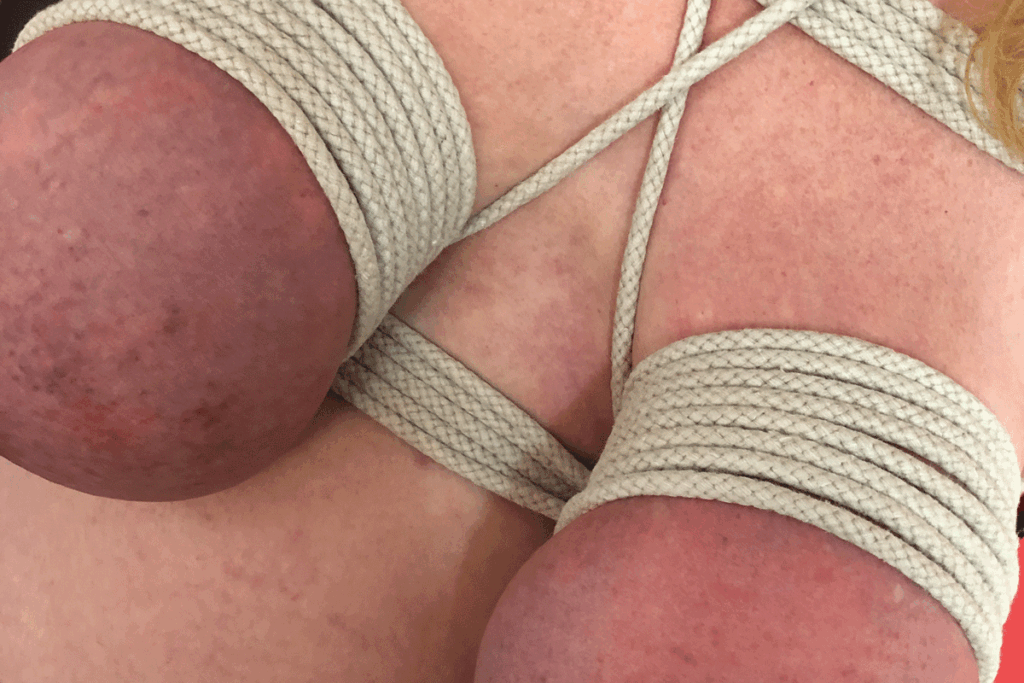Tying off
Definition
Tying refers to the tight binding of body parts – usually limbs, genitals, or breasts – with rope, straps, or elastic material, with the aim of evoking a specific physical sensation or visual effect. Tying temporarily restricts blood flow, which can cause swelling, sensitivity, tension, or a feeling of control and power. It is not bondage in the classic sense, but a technique with its own physiological impact and associated risks.

Explanation of binding
Binding is a technique in which a body part is tightly wrapped or pinched so that blood flow is temporarily reduced or stopped. This restriction can lead to increased sensitivity, visible swelling, or numbness, which can be experienced as exciting or powerful in a BDSM context.
Common forms of binding include:
- Tightly wrapping the penis and/or scrotum
- Tightly binding the breasts so that they swell
- Binding limbs (e.g., upper arms, thighs, or ankles)
Bondage can have an aesthetic and physically intense effect, but it is riskier than many people think. Incorrect technique or excessive duration can lead to nerve damage, blood clots, or necrosis. Precisely because the line between “nice and tight” and “dangerously constricted” is sometimes thin, knowledge is essential here.
Safety & points of attention
Use suitable material
Use soft but sturdy rope that is 6-8 mm thick (preferably cotton or jute for beginners). Avoid thin cord, elastic, nylon thread, or zip ties – these can cut or dig in without you noticing it right away.
Always check for blood flow
Watch for discoloration (blue, purple, white), numbness, or extreme swelling. The sub must still be able to move their toes/fingers and retain sensation. Check regularly with a finger prick for color return.
Maximum 10-15 minutes per tied-off area
Never leave a tie on for longer than 10 to 15 minutes without checking or repositioning. Tying for longer increases the risk of nerve or tissue damage.
Keep communication open
Even if your sub is in subspace, you need to be able to rely on signals. Use non-verbal signals where necessary or set up clear check-ins.
Please note
The tighter the rope, the less time you can leave it in place. It is better to tie more loosely and, if necessary, play in several rounds.
Tying vs. bondage
Although bondage and tying are similar, they differ significantly in function and risk:
| Bondage | Tying off |
| Aimed at fixing or securing | Aimed at constriction or restriction of blood flow |
| Can remain seated for long periods of time | Must be short-term and controlled |
| The goal is immobilization or surrender. | The goal is physical sensation or aesthetics |
| Minder direct risico bij juist gebruik | Less immediate risk when used correctly |
It is therefore important to treat tying as a specific technique – not as ‘just tying extra tight’. The risks are fundamentally different.
Related terms Tying
Bondage
Rope
Rope technique
More information

